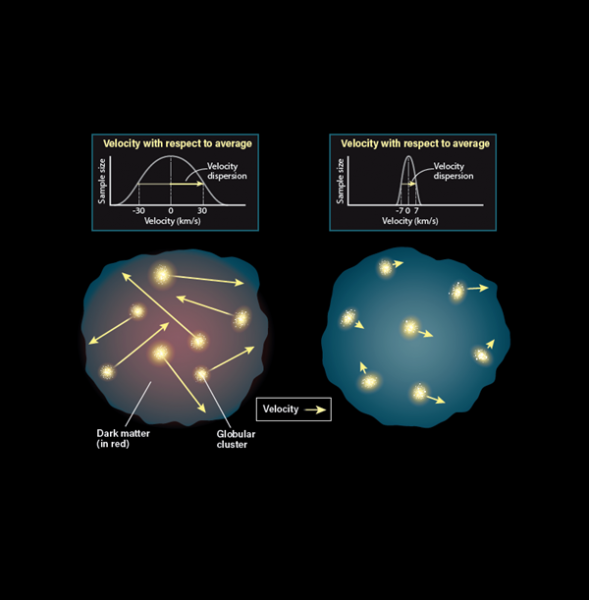Do all galaxies have dark matter? – Astronomy Magazine
Galaxies without dark matter. However, in diffuse galaxies without dark matter, the lack of hidden mass means that globular clusters within the galaxies move much more slowly. In the case of DF2 and DF4, researchers found that the globulars are moving so slowly that the mass of the galaxies’ visible matter alone is enough to account for their motions.
Astronomy: Roen Kelly
“I spent an hour just staring at the Hubble image,” said van Dokkum. “It’s so rare, particularly these days after so many years of Hubble, that you get an image of something and you say, ‘I’ve never seen that before.’ This thing is astonishing — a gigantic blob that you can look through. It’s so sparse that you see all of the galaxies behind it. It is literally a see-through galaxy.”
Using the Hubble data, van Dokkum and his team measured the galaxy’s surface brightness fluctuations, which is a rudimentary distance indicator based on the fact that more distant galaxies appear more uniform in brightness. From this, the researchers calculated DF2 is located about 65 million light-years away.
Then, based on the Keck data, van Dokkum’s team identified globular clusters (large, spherical groups of old stars) within DF2. Surprisingly, they found the globular clusters were moving at a snail’s pace compared to what we would see if the galaxy were chock-full of dark matter. If DF2 had more dark matter, van Dokkum says, the increased gravitational pull would cause these clusters to move about three times faster than they do.
The realization that DF2 seems to have very little, if any, dark matter caught the researchers off guard because it’s the first galaxy found lacking the pervasive material. “There is no theory that predicted these types of galaxies. The galaxy is a complete mystery, as everything about it is strange,” said van Dokkum. “How you actually go about forming one of these things is completely unknown.”
However, not everyone agrees that DF2 is missing its dark matter.
Debating DF2’s distance
“Something that caught my attention very early on was the fact that the galaxy was not only anomalous for not having dark matter, but also for having an extraordinarily bright population of globular clusters,” says Ignacio Trujillo of the Instituto de Astrofísica de Canarias, who led the main study challenging the bizarre nature of DF2. “I remember thinking: ‘Two anomalies at the same time really looks odd.’ ” This led Trujillo to consider whether DF2 is really as distant as van Dokkum’s team thinks.







